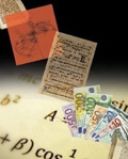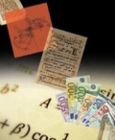
Philosophy
Why Meaning Is in the Eye of the Beholder
When you talk, what do I hear?
Posted October 1, 2010
"That's not what happened." How often have you heard or uttered this phrase, as you reminisced with siblings, friends or colleagues? You have to wonder, sometimes, whether your colleague can really have been at the same meeting as you, if that's what she thinks you all agreed. And whose parents is your brother talking about? Certainly not the ones you remember from your childhood.

Sometimes we feel that if only we could bring out our memories, like photographs, and pore over them together, then the truth would be revealed. But even if we could, the pictures that each of us brought out would not necessarily help to resolve the dispute: like the six blind men and the elephant, each of us may have experienced only one misleading part of the whole. And even if each of us did have access to the whole, there would be no guarantee of our agreeing with each other about its interpretation. We all know those Gestalt pictures that flip between different images as we look at them (rabbit or duck? two faces or a vase?). They are unusual in that the same person is capable of seeing both versions, and of alternating between them. They are quite ordinary in that they consist of lines on a page that can be interpreted in different ways. Meaning is always in the eye of the beholder.
It's in the ear of the beholder, too, amongst other sense organs. The receiver of any type of information -- visual, auditory, olfactory or whatever -- plays a much more active role in communication than many people have been accustomed to acknowledging. It is traditional to think of communication as a process in which the source actively determines the meaning of the message, and the receiver is a passive target for incoming information. In speech, for example, the speaker is seen as the source of a message that is encoded in sound waves and then decoded by the hearer's ear. But in reality there are multiple ways in which a receiver can interpret information, and decoding will not necessarily be a mirror image of encoding (Chandler 1994).
Faced with a page of Cyrillic or Gurmukhi script, for example, I see only squiggles, where a Russian or Punjabi reader sees words with meaning. I see ‘some plants' where my mother-in-law sees cotoneaster and southernwood. My husband hears ‘complicated violin music' when I hear vibrato, harmonics, double stops and left-hand plucking. I taste ‘red wine' while my husband tastes grenache.
Why should we vary so much in our interpretations of the same sensory input? Our ability to identify and understand what we experience relies on our capacity to notice the differences between the continuously varying input that our senses receive. If we are to receive information from this input, then we need to learn to discretize its continuous variation by slicing it into identifiable chunks.
Think of a child just learning the words for colours: he's seen plenty of blue things before, of course, but now we help him to notice the difference between blue things and things of every other colour. We teach him, in effect, to take the continuously varying spectrum of colours, break it off at this point and call everything up to that point ‘blue'. He has to discretize the spectrum by learning to pick out the points at which our language slices it into different colours.
It's the same when we learn to speak a new language. Conversation in an unknown language is perceived as meaningless babble. We can't begin to take information from what's said until we learn to discretize the stream of babble, slicing it into a pattern of individual words.
The points at which we learn to slice the stream will determine the ways in which we interpret what we hear. The child who interrupted her History teacher's dictation, to ask how to spell ‘Stayan Age', did so because she had been slicing the stream of the teacher's speech in the wrong places: the teacher had not been commenting on what happens ‘in the Stayan Age' but ‘in this day and age'.
The ways in which we decode and interpret incoming information will always be determined by what we have learned and experienced to date. As we go through our lives, each of us builds up a unique range of interpretative methods. This means that different people's experience, interpretation and memory of identical sensory input can vary enormously. And when disagreements arise from differing interpretations of the same events, feelings are heightened by the sincerity of each side's conviction that this is what happened - not that.
What happens next, of course, is determined by the grace with which we are able to handle the situation. Do we care more about proving that we're right or about maintaining our relationship with the people who disagree with us? The answer isn't always straightforward - but it can be helpful to bear in mind the possibility that, for the other person, really, "That's not what happened."

